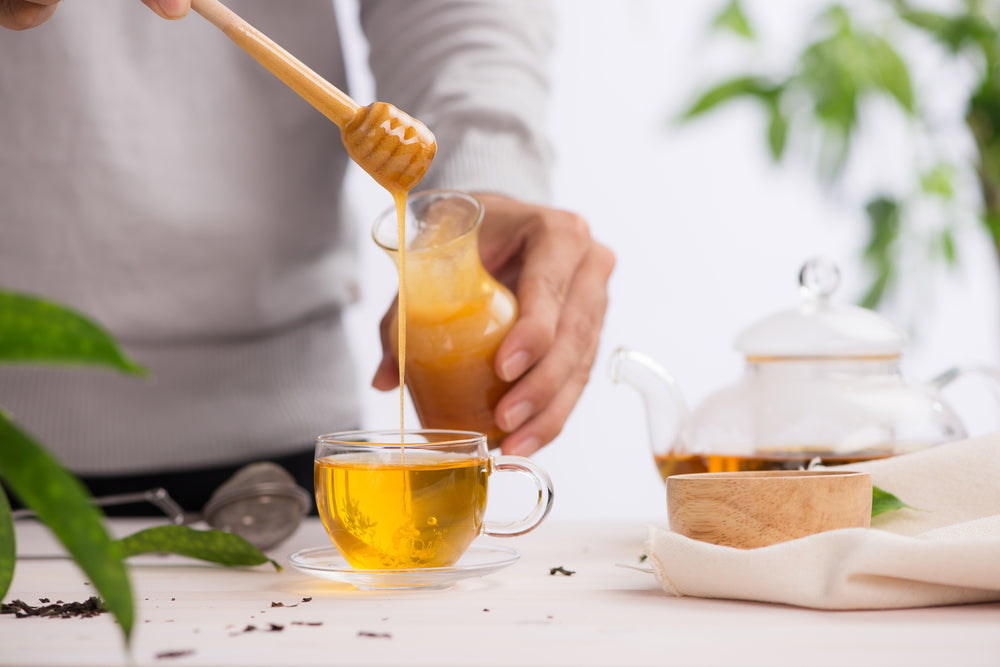At a time of year when the common cold truly lives up to its name, reaching for the medicine cabinet is an instinctive reaction. Could honey also be part of your natural winter wellness toolkit?
Yes, you heard that right — honey. That thick, golden liquid created courtesy of industrious busy bees, straight from the nectar of flowering plants. Many swear by it for keeping a tickly throat at bay.
Not all honey is created equal, though.
The type of honey we’re talking about — Manuka honey — is distinct from regular honey as a result of its high methylglyoxal (MGO) content. It is made by bees that pollinate the New Zealand-native leptospermum scoparium, also known as the Manuka plant.
It's the active ingredient, MGO, that lies behind manuka honey's wellness magic, including even for skin care and wound healing.
It wasn’t until 2008 that the importance of this unique component was independently verified by two laboratories and we were able to start rating Manuka honey by its MGO content.
Let’s take a look at what we know about this manuka’s role in tackling the tickle during the winter months.
Can manuka honey help a sore throat or cough?
In recent years, honey (not just manuka honey) has been officially recognised as a weapon in fighting coughs, sore throats and even resistance to antibiotics. Health bodies including Public Health England now recommend honey and cough medicines as a first line of defence against a cough, sore throat or runny nose, rather than antibiotics.
The increasing popularity of manuka honey is a subject of relatively recent research. As we’ve discussed, manuka honey is distinguished from other types of honey by the presence of high levels of methylglyoxal (MGO). It’s this unique compound that gives the honey its much-lauded wellness properties.

Which strength of manuka honey is best for a sore throat?
Manuka honey products are rated according to their MGO content — the most popular manuka honey common rating systems are MGO and UMF. A manuka honey product with a MGO 30+ rating is certified to contain at least 30mg of MGO content per kilogram, for example.
It’s when you get to the higher strengths of manuka honey — such as MGO 250+, MGO 400+ and MGO 550+ — that the unique properties of the honey become stronger.
That said, a warm drink (with some delicious manuka of any strength stirred in) stands a great chance of bringing comfort when you need it most.
Whilst sweet foods aren’t traditionally seen as good for our teeth, did you know that manuka honey has even been found to help with our oral hygiene?
How do I use manuka honey to treat a sore throat?
There are a number of manuka honey products specially developed for those wanting to soothe a sore, tickly throat — it may be worth trying some drops which simply dissolve in your mouth and should be used up to five times per day. You may also want to pick up a throat spray — three or four sprays should do the trick.
Of course, plain old manuka honey does the trick, too. For a true winter wellness wonder, juice half a lemon and pour it into a glass, add some sliced ginger and fresh mint leaves before pouring on some simmering water. Then grab either a MGO 250+, MGO 400+ and MGO 550+ jar (and perhaps your favourite book) and stir in a teaspoon of natural sweetening goodness!

Mānuka Health: the very best of nature and science
We’re Inspired Health, the official UK home of a number of health and wellbeing brands. This includes Mānuka Health and their leading collection of premium, genuine New Zealand manuka honey products. From MGO 30+ to MGO 550+, each product is certified for natural methylglyoxal (MGO) content.
Explore a number of other manuka honey products within the range, too: lip balms, honey drops, soaps, throat sprays and even toothpastes. Oh, and for more insights, information and expertise about this unique type of honey, make sure to head over to The Hive!



